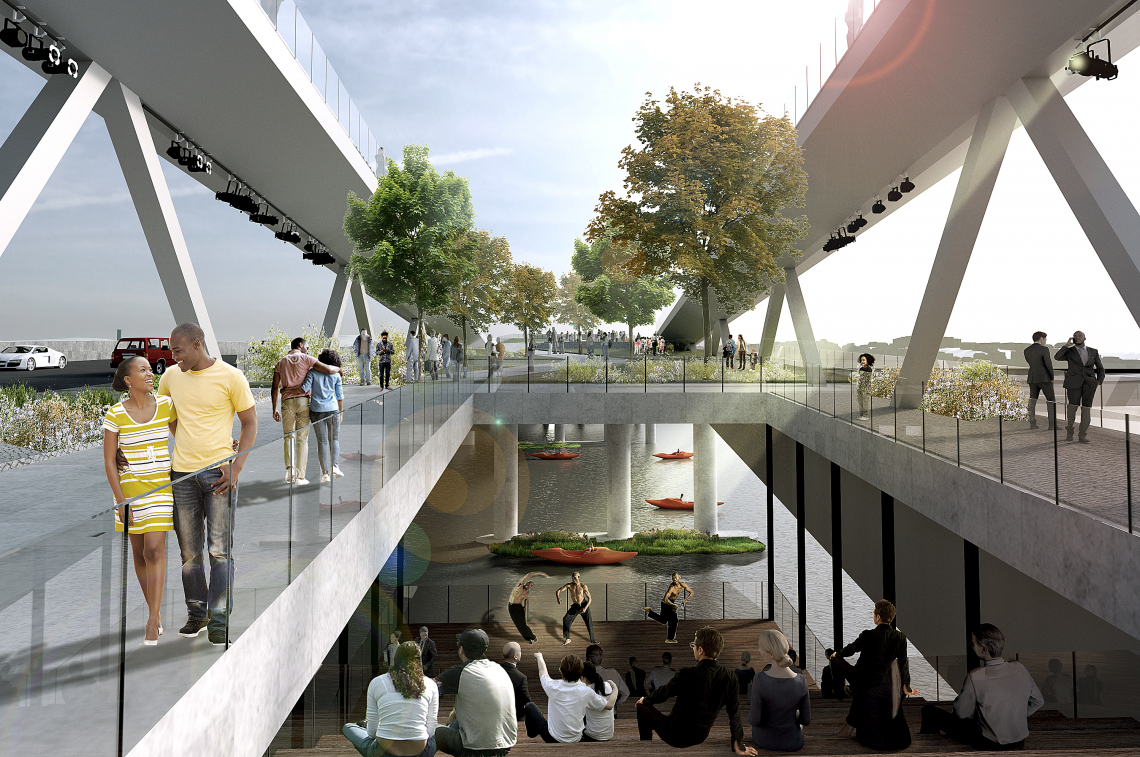
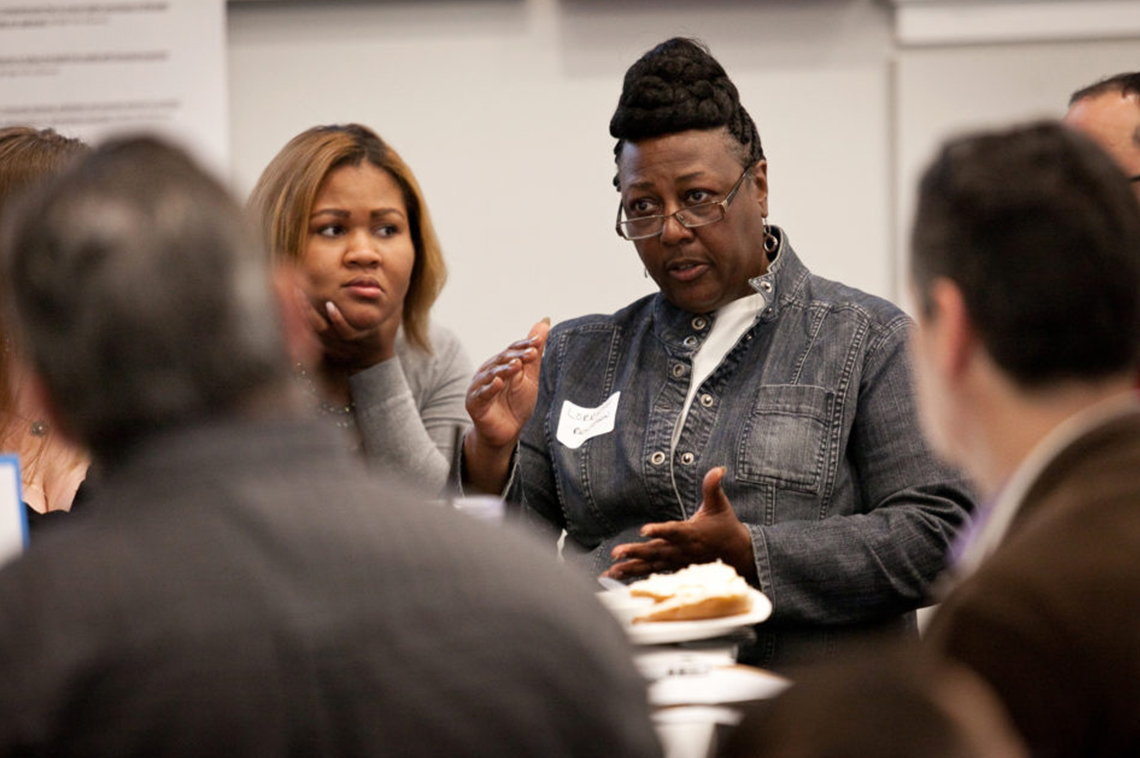
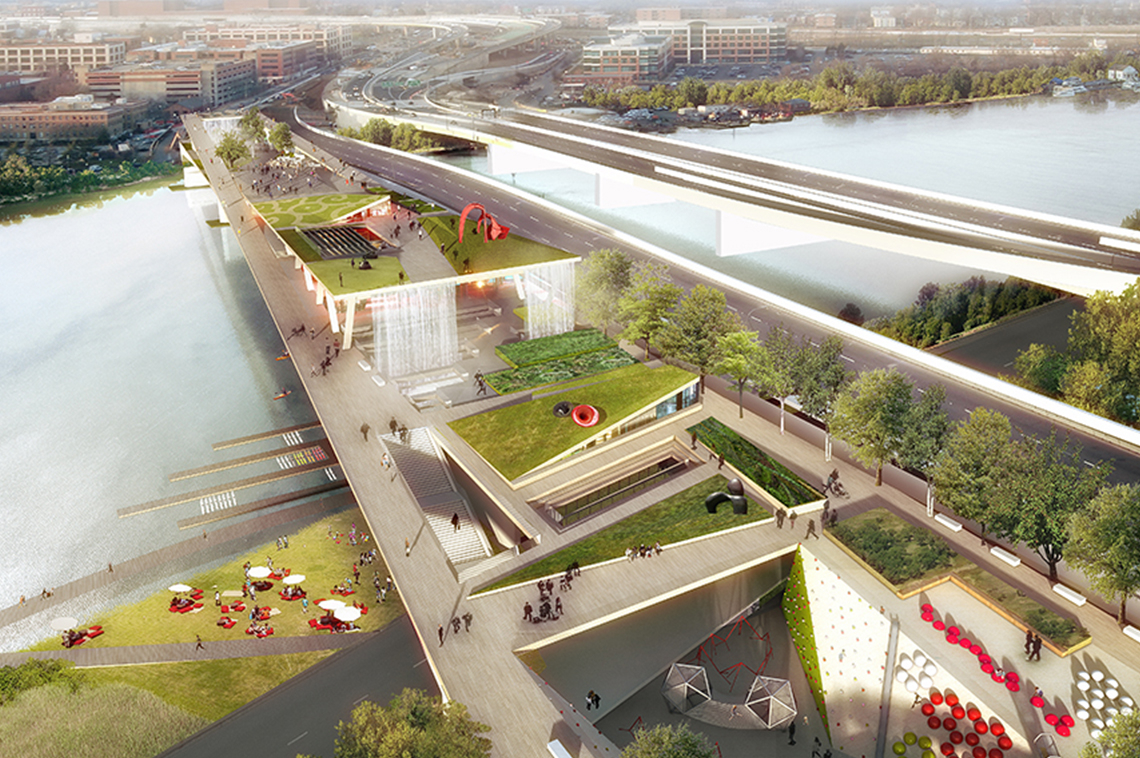
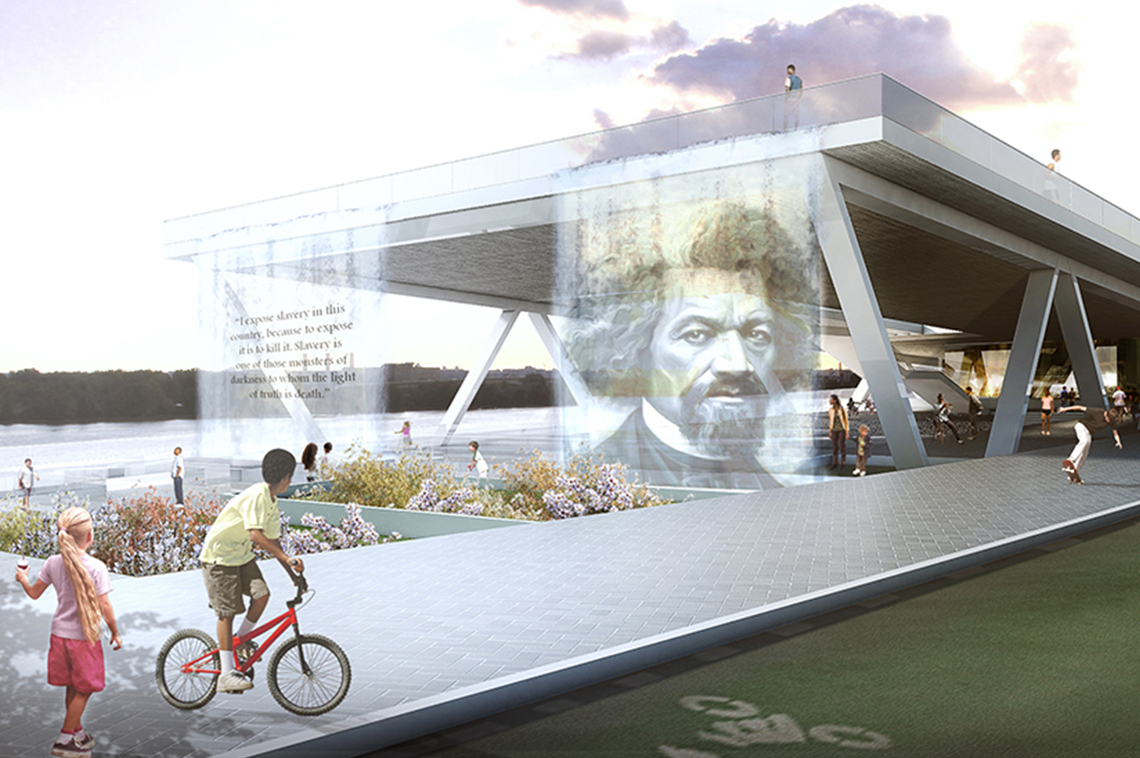
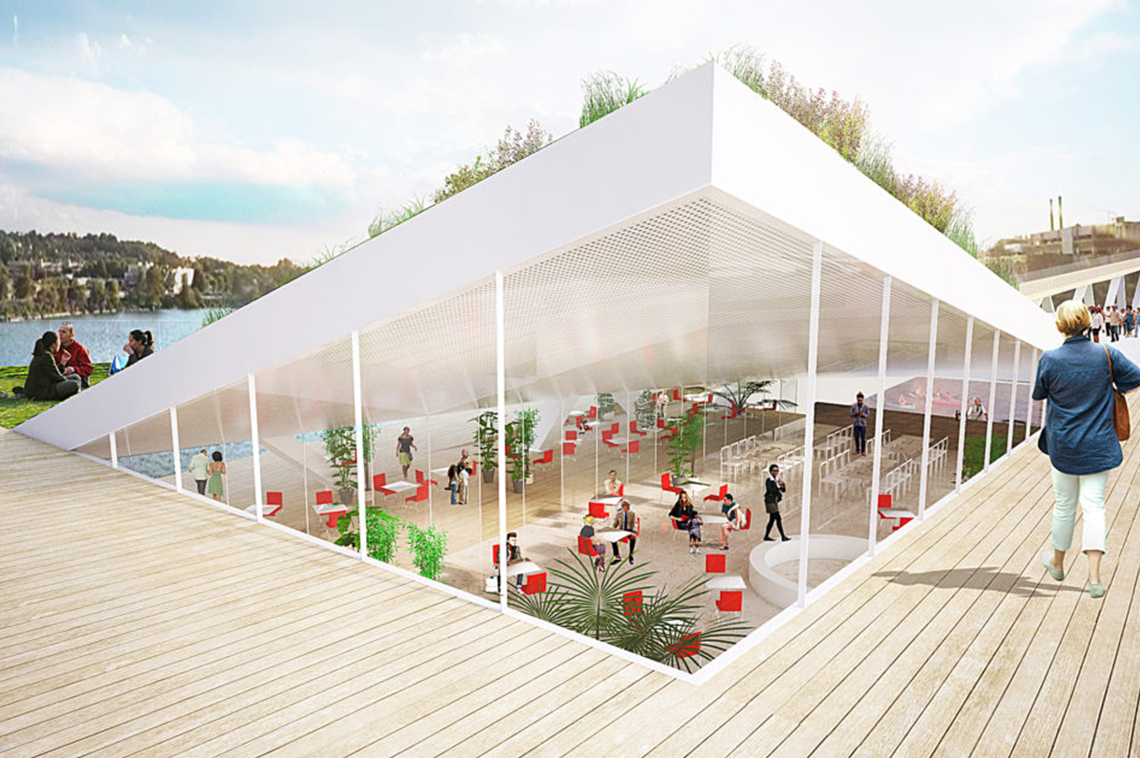
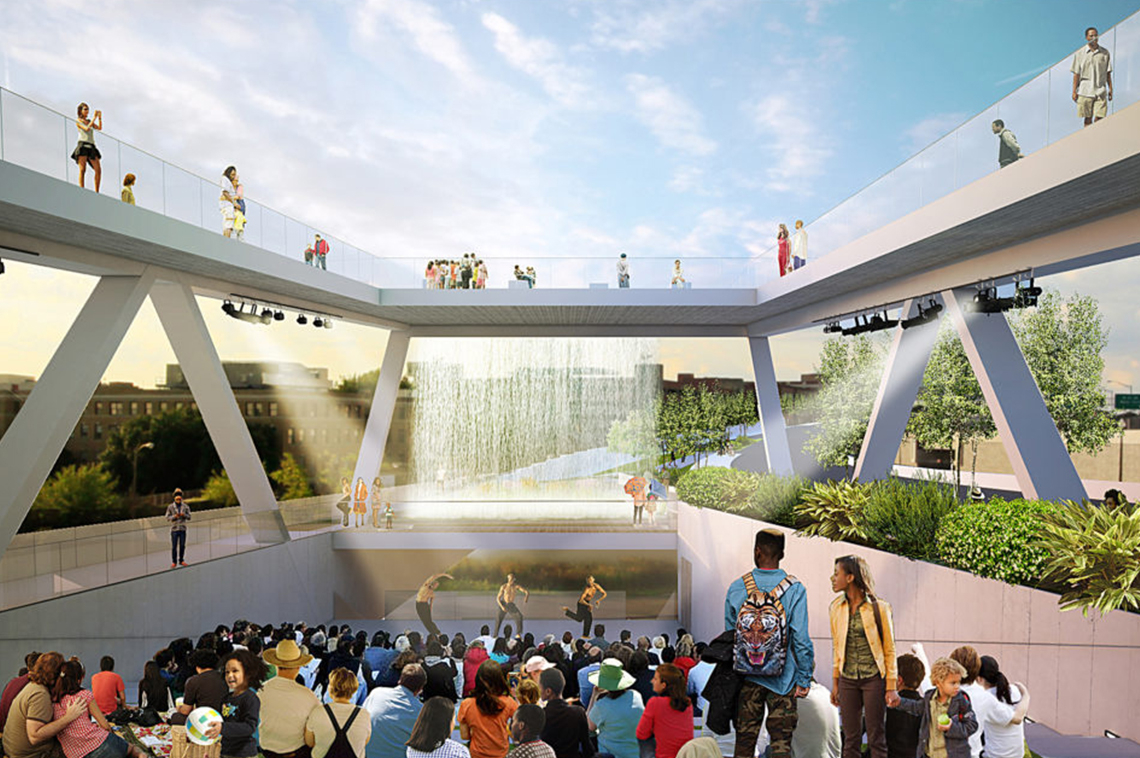
This story originally appeared on The Renewal Project, which is made possible by Allstate.
---
The 11th Street Bridge Park will become the District of Columbia’s first elevated park, connecting the historic Anacostia and Capitol Hill neighborhoods that are geographically divided by the Anacostia River. This new civic space—a project of the nonprofit Building Bridges Across the River and the District government—will span the Anacostia River, constructed on top of the piers which once supported the old 11th Street Bridge. From the beginning, community engagement and feedback have driven the conceptualization and design of this new civic space. The first two years were filled with hundreds of neighborhood meetings on both sides of the river, which led to 13 community-identified principles and six programming concepts for the design of the park, with the goal of creating an innovative public space for recreation, arts, and environmental education.
Throughout this community-led process, it became clear that the Bridge Park had the potential to be more than just an innovative public space. In particular, the park could symbolize a new unity and connection between a booming area of the city and one that has long been overlooked and excluded from the city’s economic progress. While many park design strategies can, and will, be implemented to increase the connectivity and interaction between those living on both sides of the river, more must be done to ensure that those currently living near the 11th Street Bridge will benefit from the success of the park on a continued basis.
To that end, Bridge Park staff partnered with the D.C. staff of Local Initiatives Support Corporation (LISC) to convene a series of community meetings to create actionable recommendations in three categories: workforce development, supporting small business enterprises, and housing. Our Equitable Development Plan was announced in late 2015 and included 19 specific recommendations. The goal of this plan was to ensure that the 11th Street Bridge Park is a driver of inclusive development–development that provides opportunities for all residents regardless of income and demography.
Over the last year and a half we’ve been implementing these recommendation by starting a Ward 8 Home Buyers Club with the affordable housing provider Manna, partnering with Housing Counseling Services to run monthly tenant rights workshops and working with City First Enterprises to stand up a Community Land Trust. Last May, our partners at LISC DC announced a $50 million investment in the mile-long area around the Bridge Park as part of their Elevating Equity initiative. From the beginning, like-minded projects around the country shared their lessons learned as they worked to build a more inclusive community. We thought we’d return the favor and share some helpful advice we’ve learned to date.
1. Start early!: When the market discovers your project, it can move much more quickly than you can possibly respond. We started to formulate our Equitable Development Plan five years before the earliest we could open the park and we are already seeing our selected design renderings featured in local real estate ads.
2. Learn from the field: We talked to like-minded parks across the country to learn from their work. We reviewed the Beltline’s early Equitable Development Plan in Atlanta and are carefully following the Urban Land Conservancy as they stand up a Community Land Trust in Denver.
3. Data informed decisions: Before trying to create specific recommendations, we worked with our colleagues at LISC DC to bring together experts and assemble data on those who live near the Bridge Park. This included existing property values and their change over time, renters vs. homeowners, demographics, poverty levels, and the area median income (AMI). This was critical to forming our action items.
4. Be intentional: It is important to embed equity and inclusivity in all of our work. For instance, how does your staff, volunteers (and board!) reflect the community in which you serve? As you bring on additional team members, take the extra time it sometimes requires to identify diverse and local candidates. And remember that your park’s impact doesn’t stop at the property line. Invest in the community as you are investing in your green space.
5. Engage the community: To form our Equitable Development Plan, we held a series of half-day brainstorming sessions with key stakeholders from diverse backgrounds. These individuals represented city agencies (planning, housing and community development, office of the tenant advocate, employment), experts (Urban Institute, Enterprise), business owners, faith leaders, and local residents. The first two sessions were invite-only to ensure we had the right people in the room. (Note: it is very helpful to have a professional facilitator lead these sessions along with official note takers.) When we had an early draft of the plan, we held large public sessions to gather additional feedback, help us prioritize these ideas, and identify existing community organizations that could help us implement the recommendations. Finally, we posted a draft version online for public comment.
6. Take a multi-sector approach: We began this effort focusing on affordable housing issues, but quickly learned that safe and secure housing was so much more difficult without gainful employment. We then added two additional topics: workforce development and small business enterprises. Each of these areas are deeply interconnected and should not be considered in their own separate silos. If we were to start this process over, we would have added a fourth topic–cultural displacement. We are currently working to develop cultural equity to incorporate into our plan.
7. Build early wins: Some recommendations might take many months or even years to accomplish, such as building a Community Land Trust from scratch. It is important to build accomplishments so that the community can see tangible progress. In our case, we started a home buyers club two months after we released the Equitable Development Plan’s recommendations. There are currently 136 local residents participating in the class with over two dozen people purchasing their own homes in the area capturing the neighborhood’s rising equity.
8. What gets measured gets done: Once we had a final plan with 19 specific action items, we worked with senior researchers at the Urban Institute to develop clear measurable goals for each recommendation. We are continuing to work with the Urban Institute over the next three years to provide a constant feedback loop to ensure we are meeting our goals and have the ability to course correct over time.
Working intentionally and collaboratively with the communities that we serve, we can build an equitable and inclusive space in the nation’s capital.
The 11th Street Bridge Park was a 2015 ArtPlace funded project.





